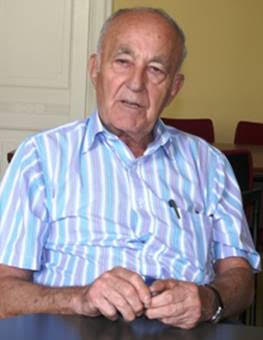
THE VOICE OF INTERNATIONAL LITHUANIA
|
VilNews has its own Google archive! Type a word in the above search box to find any article.
You can also follow us on Facebook. We have two different pages. Click to open and join.
|
Author Archive
- Posted by - (0) Comment
 The bonfires and
The bonfires and
barricades that
saved Lithuania
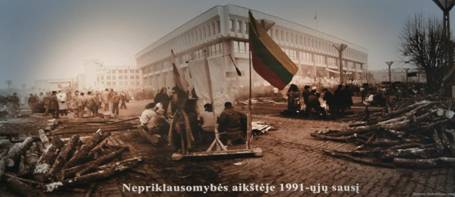

In January 1991, the Lithuanian Parliament was for weeks surrounded by hordes of people, bonfires, concrete blocks and vehicles that the Lithuanian people had brought there to protect their leader and their elected representatives against the Soviet atrocities against innocent
people. Today, exactly 22 years later, the Parliament is
surrounded by peaceful, quiet winter streets.
Top photo: Zenono Nekrošiaus
Text and photos: Aage Myhre, Editor-in-Chief
aage.myhre@VilNews.com
It was not bonfires, concrete blocks, steel beams, barbed wire or tractors which in themselves rescued Lithuania in January 1991. But it was these simple remedies, not weapons, that came to represent the peaceful resistance Lithuanians showed towards their powerful opponent from the east.
I'll never forget the sight of the flames and the large crowd that met me the day I was walking down the Gedimino prospekto towards the Parliament an icy winter day in January 1991. I read a combination of hope and despair in the faces, but first of all I saw determination. This time we will not surrender! The Soviet Union shall not again be allowed to trample us down under its iron heel!
The tactics succeeded. The Lithuanian people united as never before, or since, and the assailants had to withdraw in favour of a free and democratic Lithuania. Some of the symbols of this defining moment in our country's history can still be seen outside the Parliament.
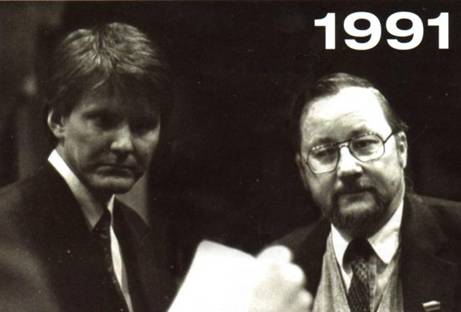
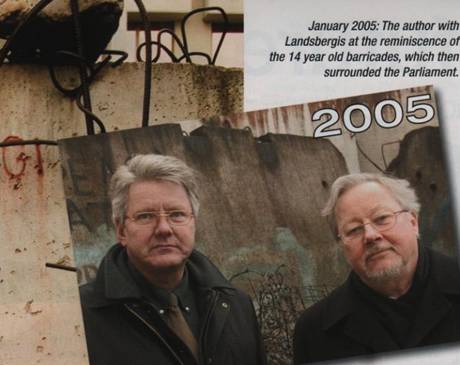
In January 1991 I crossed the barricades to visit President Vytautas Landsbergis in his Lithuanian Parliament office, while the Soviet troops and tanks continued to surround the building. 14 years later we visited together what was left of the concrete barricades from that time. These are now protected by a glass structure.

1991
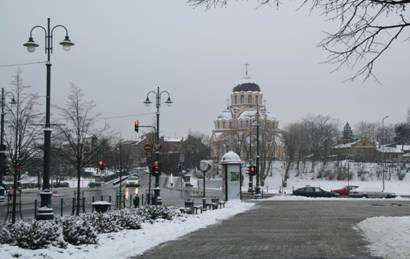
2013
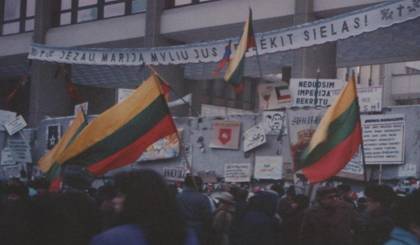
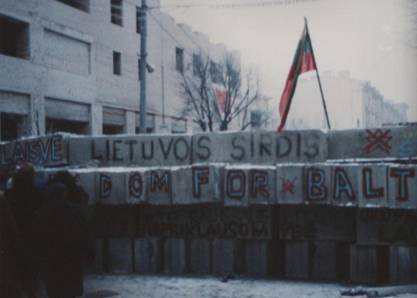
1991


2013
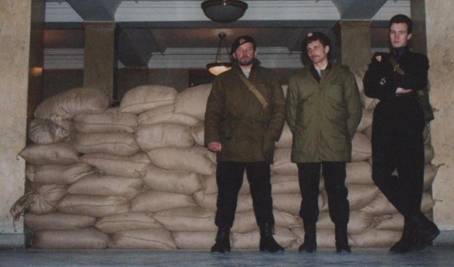
It was very touching to see how the Balts acted to keep their newfound freedom and protect their home country during the very difficult January days of 1991. Here, at the entrance to the Lithuanian Foreign Ministry, the young men have put on homemade clothes that are meant to look like uniforms. They carry rifles and other weapons they have found in their homes. Sand bags have an important symbolic effect. Brave guys!
Photo: Aage Myhre, 18 January 1991.
- Bookmark :
- Digg
- del.icio.us
- Stumbleupon
- Redit it
- Posted by - (0) Comment
 The bonfires and
The bonfires and barricades that
saved Lithuania


In
January 1991, the Lithuanian Parliament was for weeks surrounded by hordes of people,
bonfires, concrete blocks and vehicles that the Lithuanian people had brought
there to protect their leader and their elected representatives against the
Soviet atrocities against innocent people. Today, exactly 22 years later,
the
Parliament is surrounded by peaceful, quiet winter streets.
Top
photo: Zenono Nekrošiaus
Text
and photos: Aage Myhre, Editor-in-Chief
aage.myhre@VilNews.com
It was not bonfires, concrete blocks, steel beams, barbed wire or tractors which in themselves rescued Lithuania in January 1991. But it was these simple remedies, not weapons, that came to represent the peaceful resistance Lithuanians showed towards their powerful opponent from the east.
I'll never forget the sight of the flames and the large crowd that met me the day I was walking down the Gedimino prospekto towards the Parliament an icy winter day in January 1991. I read a combination of hope and despair in the faces, but first of all I saw determination. This time we will not surrender! The Soviet Union shall not again be allowed to trample us down under its iron heel!
The tactics succeeded. The Lithuanian people united as never before, or since, and the assailants had to withdraw in favour of a free and democratic Lithuania. Some of the symbols of this defining moment in our country's history can still be seen outside the Parliament.


In
January 1991 I crossed the barricades to visit President Vytautas Landsbergis
in
his Lithuanian Parliament office, while the Soviet troops and tanks continued
to
surround the building. 14 years later we visited together what was left of the
concrete
barricades from that time. These are now protected by a glass structure.

1991


2013



1991




2013

It
was very touching to see how the Balts acted to keep their newfound freedom and
protect their home country during the very difficult January days of 1991. Here, at the entrance to the Lithuanian Foreign Ministry,
the young men have put on homemade clothes that are meant to look like
uniforms. They carry rifles and other
weapons they have found in their homes. Sand
bags have an important symbolic effect. Brave guys!
Photo:
Aage Myhre, 18 January 1991.
- Bookmark :
- Digg
- del.icio.us
- Stumbleupon
- Redit it
- Posted by - (0) Comment
By: Linas Johansonas LTnews.net
(Cleveland) Linas Muliolis was your average young Lithuanian born in the USA. The son of World War II refugees, Linas grew up in Cleveland's Lithuanian community. In January 1991, he was just a month away from turning 21 years old & was in Vilnius during the historic Jan. 13 events. Earlier this week, LTnews.net talked with Linas about his experiences 22 years ago.
HOW DID A YOUNG MAN FROM CLEVELAND END UP IN VILNIUS DURING A 'REVOLUTION'? "I went there (Lithuania) to live for a year, to study language at Vilnius University. Things were heating up and in the beginning of January, I went there (parliament building) and volunteered to be an interpreter. I worked in the information bureau with Rita Dapkute".
WERE YOU AT THE PARLIAMENT BUILDING ON JAN. 13? "Yes. I was there for four days with only two, four-hour breaks of sleep ..... Had my own gasmask issued to me". (it was 108 hours with 2 four-hour naps)
- Bookmark :
- Digg
- del.icio.us
- Stumbleupon
- Redit it
- Posted by - (0) Comment
How a Lithuanian from America
ended up in the middle of historic
Jan. 13 events in Vilnius

By: Linas Johansonas LTnews.net
(Cleveland) Linas Muliolis was your average young Lithuanian born in the USA. The son of World War II refugees, Linas grew up in Cleveland's Lithuanian community. In January 1991, he was just a month away from turning 21 years old & was in Vilnius during the historic Jan. 13 events. Earlier this week, LTnews.net talked with Linas about his experiences 22 years ago.
HOW DID A YOUNG MAN FROM CLEVELAND END UP IN VILNIUS DURING A 'REVOLUTION'? "I went there (Lithuania) to live for a year, to study language at Vilnius University. Things were heating up and in the beginning of January, I went there (parliament building) and volunteered to be an interpreter. I worked in the information bureau with Rita Dapkute".
WERE YOU AT THE PARLIAMENT BUILDING ON JAN. 13? "Yes. I was there for four days with only two, four-hour breaks of sleep ..... Had my own gasmask issued to me". (it was 108 hours with 2 four-hour naps)
WERE THERE ANY OTHER "VOLUNTEERS" FROM ABROAD THERE? "From America, I think Rita Dapkute, Darius Suziedelis & I were the only 3. There was a group from Moldova. There was about a half dozen of them, in case of attack, they were there mostly for moral support but it was nice to have them there... very well received".
SO THE MOLDOVANS WERE THERE TO DEFEND THE PARLIAMENT BUILDING? "Basically yes... I can't remember if they were armed... I think I only remember seeing guns once ..... on the main floor..."
DID YOU EVER WORRY ABOUT WHAT WOULD HAPPEN TO YOU IF THE SOVIETS TRIED TO OR DID TAKE OVER THE PARLIAMENT BUILDING? "No, not at all, why would I worry about that? (he answered jokingly). I made sure I kept my passport with me at all times, in case.. who knows if it would have helped, though. I always said the rest of my life would be anti-climactic".
WERE YOU EVER TOLD WHAT TO DO IF THE BUILDING WAS ATTACKED? WERE YOU GIVEN A GUN? "No - there were practically no guns to be seen, this was primarily a peaceful protest... I WAS issued a gasmask though, because there were rumours of attack by gas".
WAS THERE EVER A TIME YOU THOUGHT TO YOURSELF 'WHAT AM I DOING HERE? AM I GOING TO DIE'? Yes, the whole time!
WHAT WAS THE MOOD LIKE INSIDE THE PARLIAMENT BUILDING ON JAN. 13? "STRESS! Pretty much what you would expect, desperation, frustration with the rest of the world, stress, worry, fear... etc".
WHAT WAS THE FRUSTATION WITH THE REST OF THE WORLD?
About non action. I remember one newspaper cartoon, for example, a rear view of Landsbergis facing a window, you see from the back that he is holding a phone, the view out the window shows a new oil well spraying oil in the air.. He says "President Bush? Guess what!"
The world was focused on the first Iraqi war, but yet on Jan 13th, we still made the top headline
DID YOU EVER CROSS PATHS WITH VYTAUTAS LANDSBERGIS DURING THIS TIME? "Yes. I was in his office once or twice, I was called in to help translate one night.. but I didn't do a great job, though, I have to admit. Once you get technical in some subject, you know how hard it can get".
WHAT WAS LANDSBERGIS LIKE? "He was calm, focused, definitely calm and reserved".
WHEN DID THOSE OF YOU IN THE PARLIAMENT BUILDING HEAR ABOUT THE CIVILIAN DEATHS? We heard about the deaths as they were happening. I remember the death count rising. I was surprised how accurate the news reports were in the US and in the UK, everything was pretty accurate, sometimes the number of deaths was off, but considering how confusing the time was overall, the news articles I saw were close to reality.
DID YOU HAVE ANY CONTACT WITH YOUR FAMILY BACK IN CLEVELAND? Yes. After I took the photo of the Soviet tanks (posted below) I was on the phone with my mother at the time, "Mom, don't be scared, but there is a column of tanks going by" probably was not a good thing to say to my mom. She turned gray that year.
BEING AN AMERICAN-BORN LITHUANIAN, HOW WERE YOU TREATED BY THE NATIVE LITHUANIANS IN THE PARLIAMENT BUILDING? "People were grateful for me being there. I was generally well accepted By that time I had learned to look and act local, gotten rid of most of my American accent, though"
WAS THERE ANY SINGLE MOMENT THAT STANDS OUT FOR YOU? "The single most amazing thing I saw happened late at night, I believe it was on the night of January 12th, I may be wrong. Do you remember the photo of the lone Chinese man standing in front of a column of tanks at Tiananmen Square? The Parliament Building is right next to the river, and there was a bridge over it leading to the square where hundreds of thousands of people were protesting and guarding our fledgling government. That night, suddenly someone in the room called out, said there were reports of a column of tanks racing towards us.. Hearts pounding, we raced to the windows. I was on the fourth floor so had a great view. A long column of tanks came racing towards us. The most amazing thing I have ever seen in my entire life, was the mass of people simply rush in to block the way. Those tanks would EASILY have crushed hundreds of people in seconds if the continued through. I have never witnessed such bravery and selflessness in my entire life. Luckily, however, at the last seconds, those tanks and APC's slowed down and turned right, away from the Parliament Building ".
WHEN DID YOU FEEL EVERYTHING WAS GOING TO BE OK? "When most of the tanks left".
ANY FINAL THOUGHTS? "This was definitely one of the most memorable times of my life, something I will never forget! My whole life I had been taught that someday Lithuania will again be free, that we needed to keep the language and culture alive.. Then, when I was 20, turning 21 - It happened and I was a part of it!"

Cleveland Plain Dealer - Jan. 1991

Photo by Linas Muliolis taken from parliament building - Jan. 1991

Photo by Linas Muliolis taken from parliament buikding - Jan. 1991

Linas Muliolis - Cleveland, Ohio - 2012

Jenifer C. Dillis Simply heart-stopping...

Linas K Muliolis I have to add something to this, I don't know how I forgot.. You caught me during an extremely busy week for this interview and I did not get enough chance to rehash all of the events. The single most amazing thing I saw happened late at night, I bel...See More

Jean-Paul Le Clercq Go Linas Go! The Soviets had no idea what was waiting for them behind Parliament walls!

Sam Salerno I feel shameful that I've never heard of this. Makes me wonder what else is going on in the world today that I don't know about. You're an Awesome man Linus.

Jūra Liaukonytė Thank you LT news for this interesting interview.

Dana Baltutis Yeah...its an event I wont forget. I still have the videos that my close friend Monika, her mum and I smuggled out via the Australian embassy in Moscow a few weeks later.

Rita Kova Murnane I was there in August of 91...

Jurate Grigonis Dana Baltutis from Australia was also there.

Tony Geraci Wow!

Ruta Rusinas Tomas Zizys from Toronto was also there.

Mardell Ward awesome! that was really interesting.

Dana Baltutis We were standing outside the television station when the tanks came and the soldiers started to jump out of the tanks with their guns.. Ill never forget the rumble and confusion. A friend who I was with got shot in the leg. We had to crouch down and run from the gunfire. People were so brave that night and next morning going to the Parliament knowing what had happened the night before.

Mindaugas Petrauskas Another unsung hero.. The majority of Lithuanian people do not know anything about stories like this.

Giedrius Pavardenis Hey guys, you're all awesome

Roberta Zarnauskaite We can only admire the unity and bravery of people at that time!
I wish nation still has it in the blood!!
Peace to all!
- Bookmark :
- Digg
- del.icio.us
- Stumbleupon
- Redit it
- Posted by - (0) Comment
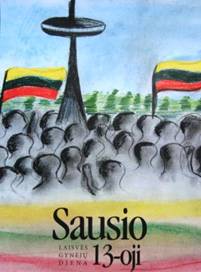
22 YEARS AGO
The infamous 1991 January events took place in Lithuania 11-13 January 1991, in the aftermath of the Act of the re-establishment of the State of Lithuania. As a result of Soviet military actions, 14 civilians were killed and more than 1000 injured.

Jon Platakis 22 years ago, Lithuanians paid the price for freedom. I wonder if Lithuanians are willing to pay the price for freedom today.

Aage Myhre Jon Platakis, I think they would. The difference from 1991 is that back then they had an outspoken leader and a clear vision. Unfortunately, these features have been in short supply in Lithuania since then ...

Bartłomiej Kolubiński Glory to the Brave People!

Jenifer C. Dillis ...I just cried...As an American Lit, I had NO IDEA what was happening in Jan 1991. I was in college, safely tucked away here in America. My roots are Lit, but without having had any contact with any relatives or friends back in those days, I only HEARD stories of a frequent visitor who smuggled Levis in. I'm ashamed now...I was clueless of the truth...and my heart bleeds for Lietuva's Freedom Fighters both old and new...

Boris Bakunas All of Eastern Europe was aflame with hope back then. Many of those hopes remain to be fulfilled.

Jenifer C. Dillis no longer tanks to take on face~to~face...Hope can never die. It may be dimmed, but still burns! Tell us, PLEASE, how to help build it back up, and move forward. "Lietuva, Lietuva, Lietuva," is still ringing in the ears of millions...
- Bookmark :
- Digg
- del.icio.us
- Stumbleupon
- Redit it
- Posted by - (0) Comment
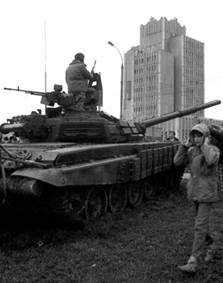
Soviet version of 1991 events in Vilnius survives to this day in Moscow
Twenty-two years ago today, as all independent investigations have confirmed, Soviet forces shot and killed 13 unarmed Lithuanian demonstrators at the Vilnius television tower, an event that galvanized the independence movement in that Baltic republic and triggered drives for independence from the USSR elsewhere.
But at the time of those events and shortly thereafter, pro-communist and pro-Soviet writers came up with an alternative explanation: they insisted that the Lithuanian Sajudis movement had organized the entire event as a provocation to the point of having its own operatives shoot and kill their fellow Lithuanians.
And some of those have even insisted that this conspiracy was part of a broader plot involving Vytautas Landsbergis who supposedly saw such a step as a necessary precondition to establishing a “fascist” and anti-Russian regime in Lithuania and even the United States which supposedly wanted a distraction as it moved to attack Iraq’s Saddam Hussein.
The most hyperbolic of these conspiracy theories have fallen as a result of their own internal inconsistencies – Landsbergis is no fascist and Washington’s Desert Storm campaign in fact limited its response to Moscow’s actions in Lithuania – but others have enough plausibility for some to discredit Lithuania’s drive to recover its de facto independence and its subsequent policies.
Such conspiracy theories about the Vilnius events of January 13, 1991, would be of limited interest were it not for two things. On the one hand, they continue to circulate among some writers in the Russian capital. And on the other, the thinking of Soviet leaders that stood behind them, if not the specific details, appear to be informing Moscow’s policy now.
On Friday, the portal of Moscow’s Strategic Culture Foundation featured a 1500-word article by Nikolay Malishevsky that repeats most of the claims against Lithuania, Sajudis, and Landsbergis by the conspiracy theorists and provides what he says is proof of all of them (www.fondsk.ru/news/2013/01/11/...
Read more…
- Bookmark :
- Digg
- del.icio.us
- Stumbleupon
- Redit it
- Posted by - (0) Comment
If there were those in the West who had not heard of Lithuania before, they almost certainly had by the end of the day
13 January 1991
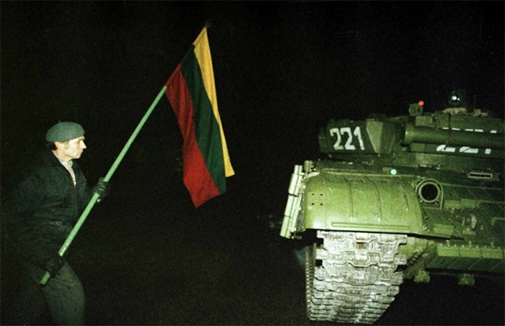
Heavy tanks were used by the Soviet forces when they attacked the Vilnius TV tower and the Parliament building on 13 January 1991. They were met by a wall of unarmed people who refused to allow the intruders to again take control of their homeland.
Text: Aage Myhre, editor-in-chief
aage.myhre@VilNews.com
"Lithuanians, do not resist, your government has betrayed you. Go home to your families and children."
This was the repeated announcement from the Soviet military vehicles with loudspeakers on the roofs, so-called sound trucks that rolled through the streets of Vilnius in January 1991. But fortunately for Lithuania and the United Europe that we now take more or less for granted, there was a music professor and a complete small nation that wanted it all differently.
Had it not been for this peaceful struggle of recovered freedom against an invasion and occupation, the people of the Baltic States never wanted or agreed to, the map of Europe would most likely have looked quite different today.
If there were those in the West who had not heard of Lithuania before, they almost certainly had by the end of the day 13 January 1991. It was the day that Soviet troops struck in Vilnius. The bloodshed that followed made headlines around the world. The attack was apparently an attempt to stop the Lithuanian independence movement in its very beginning.
When the smoke of the Soviet weapons ceased, more than a dozen people had been killed, hundreds injured. Soviet’s attack, and especially the killings at the TV tower, brought not only fame and sympathy for Lithuania from around the world, it was also a defining moment for the Lithuanians themselves.
The bloodshed meant that a point of no return had been crossed. If there was someone who until now had believed that a peaceful settlement with Moscow was possible, it was now clear to everyone that such a thing was unthinkable.
VIDEO FROM 13 JANUARY 1991
The 1991 January events took place in Lithuania between January 11 and 13, in the aftermath of the Act of the re-establishment of the State of Lithuania. As a result of Soviet military actions, 14 civilians were killed and more than 1000 injured. The events were centered in Vilnius, along with related actions in the cities of Alytus, Šiauliai, Varėna, and Kaunas.
- Bookmark :
- Digg
- del.icio.us
- Stumbleupon
- Redit it
- Posted by - (6) Comment
If there were those in the West who had not heard of Lithuania before, they almost certainly had by the end of the day 13 January 1991
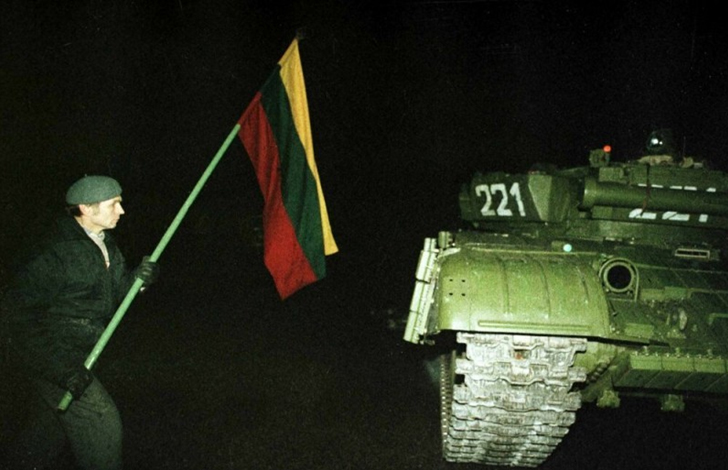
Heavy tanks were used by the Soviet forces when they attacked the Vilnius TV tower and the Parliament building on 13 January 1991. They were met by a wall of unarmed people who refused to allow the intruders to again take control of their homeland.
Text: Aage Myhre, editor-in-chief
aage.myhre@VilNews.com
"Lithuanians, do not resist, your government has betrayed you. Go home to your families and children."
This was the repeated announcement from the Soviet military vehicles with loudspeakers on the roofs, so-called sound trucks that rolled through the streets of Vilnius in January 1991. But fortunately for Lithuania and the United Europe that we now take more or less for granted, there was a music professor and a complete small nation that wanted it all differently.
Had it not been for this peaceful struggle of recovered freedom against an invasion and occupation, the people of the Baltic States never wanted or agreed to, the map of Europe would most likely have looked quite different today.
If there were those in the West who had not heard of Lithuania before, they almost certainly had by the end of the day 13 January 1991. It was the day that Soviet troops struck in Vilnius. The bloodshed that followed made headlines around the world. The attack was apparently an attempt to stop the Lithuanian independence movement in its very beginning.
When the smoke of the Soviet weapons ceased, more than a dozen people had been killed, hundreds injured. Soviet’s attack, and especially the killings at the TV tower, brought not only fame and sympathy for Lithuania from around the world, it was also a defining moment for the Lithuanians themselves.
The bloodshed meant that a point of no return had been crossed. If there was someone who until now had believed that a peaceful settlement with Moscow was possible, it was now clear to everyone that such a thing was unthinkable.
The 1991 January events took place in Lithuania between January 11 and 13, in the aftermath of the Act of the re-establishment of the State of Lithuania. As a result of Soviet military actions, 14 civilians were killed and more than 1000 injured. The events were centered in Vilnius, along with related actions in the cities of Alytus, Šiauliai, Varėna, and Kaunas.
Professor Vytautas Landsbergis was the central actor in the drama that took place . The colourful, sometimes tempered music professor who was elected Lithuania's president (chairman of the parliament) in March 1990, and from then on become the symbol of the Lithuanian liberation movement. Before the attack in January 1991, his constant talks about breaking free from the Soviet Union, and Lithuania's moral right to do just that, alarmed observers in the West almost as much as in the Kremlin. When the rage was taken completely out of hand in January 1991, Gorbachev seemed as if he did not understand what was happening right in front of him.
Our little Norwegian delegation met with Landsbergis in the parliament on the 19th of January 1991. He lived there, entrenched, protected by his own people. Tens of thousands were ‘camping’ outside the building, inside homemade barricades of concrete blocks and barbed wire. Trucks and tractors were also part of the barricades. In a circle further out stood the Soviet forces, ready to attack when the command word would be given. Fortunately it didn’t happen. The pressure had become strong from all around the world.
We got through the barricades. The Ministry of Foreign Affairs had provided us with appropriate admission papers. It was a moving encounter with a brave man we experienced inside. The little stroke that fell the huge oak. World history was created there and then. In front of our eyes. We were the eye witnesses.

The editor with President Vytautas Landsbergis in the Lithuanian Parliament (Seimas), while the
Soviet troops and tanks continued to surround the building in January 1991.

Bonfires, day and night, outside the Parliament, January 1991.
Photo: Aage Myhre.

Bonfires outside the Parliament, January 1991.
Photo: Aage Myhre.

A human barricade surrounding the Parliament, January 1991.
Photo: Aage Myhre.

With Landsbergis inside the Parliament, 19 January 1991, and his handwritten greeting to the editor.

Homemade barricades of concrete blocks around the Parliament.
Photo: Aage Myhre.

It was very touching to see how the Balts acted to keep their newfound freedom and protect their home country during the very difficult January days of 1991. Here, at the entrance to the Lithuanian Foreign Ministry, the young men have put on homemade clothes that are meant to look like uniforms. They carry rifles and other weapons they have found in their homes. Sand bags have an important symbolic effect. Brave guys!
Photo: Aage Myhre, 18 January 1991.

Inside the city armoured vehicles on rubber wheels were used. It was a bizarre, almost surreal experience to always be spotting, hearing the noise, feel the ground tremble when we were in meetings or trying to get a meal in one of the city's few restaurants.
- Bookmark :
- Digg
- del.icio.us
- Stumbleupon
- Redit it
- Posted by - (0) Comment
13 January 1991
through an artist’s eyes
 The photo. |
Artist Ruta Brazis-Velasco: This painting was done as an exercise in college of a trauma painting, done in oil with a pallet knife in 5 minutes. I used a Magazine type book that documented the truth.” |

- Bookmark :
- Digg
- del.icio.us
- Stumbleupon
- Redit it
- Posted by - (1) Comment
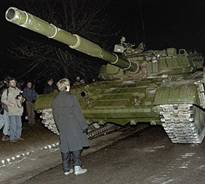
White picket fences
Copyright 1991 by Susan M. Lucas
(Now Susan Lucas Kazenas)
They came into my land
by the hundreds,
by the thousands.
They led their communist offenses
through my white picket fences
and hung their red iron curtains in my window.
They raped my pride
and murdered my children.
Those who escaped were not raped
but could not come home again.
Those left inside had nowhere to hide.
And I laid still in a cold, dead silence
while hot, burning tears
flooded my land.
It didn't go into the history books
of the many lives that they took.
It was a blood no one knew was shed;
because by the sickle it was led.
My beauty within is not seen without.
Do I have nothing to give the world?
My people are loyal,
but you see, I have no oil.
Nor do I have food on my plate
because the greedy bear sits and guards my gate.
Now I am his property when I was always MY OWN.
I belong to NO ONE
but the people who till my land
with their own bare hands,
And to my God to whom those hands are raised.
I have not forgotten my
White Picket Fences
torn down by your offenses.
I rebel against this prison called Fate.
I am the Baltic States.
(I wrote this in 1990 as Lithuania fought for its independence against the former USSR. This poem was hung on the wall by the TV tower in Vilnius after Bloody Sunday. I hope you enjoy it and welcome your comments.)
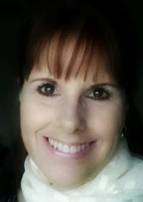
"Their wounds of war run so deep, one can still see the scars of the sickle."
Susan Lucas Kazenas
- Bookmark :
- Digg
- del.icio.us
- Stumbleupon
- Redit it
- Posted by - (0) Comment
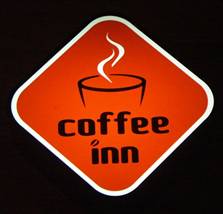
BaltCap invests in Coffee Inn
Coffee Inn was established in Vilnius in 2007 by the group of Lithuanian entrepreneurs. Today, the company operates 28 branded coffee shops and expects to have sales over €3 million in 2012. Coffee Inn shops are located in Vilnius, Kaunas, Klaipeda, Palanga, Siauliai and Riga, Latvia.
Vygantas Maksele, the CEO of Coffee Inn said: “We are very pleased with having attracted BaltCap as new investor in Coffee Inn. With BaltCap’s financial and strategic backing, we are confident that the company will continue its strong growth in the coming years. Regional market for branded coffee bars is at a very exciting stage of its development and we should capitalize on this opportunity.”
"We believe that Coffee Inn has the strongest growth potential among local chains of branded coffee shops in the Baltics. We look forward to working with the competent management team of the company, who has demonstrated an impressive record over the last four years in both expanding the chain across Latvia and Lithuania and building highly loyal customer base." said Kornelijus Celutka, Investment Director at BaltCap.
Read more…
- Bookmark :
- Digg
- del.icio.us
- Stumbleupon
- Redit it
- Posted by - (0) Comment
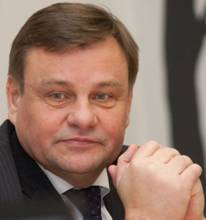
Lithuania’s NEW Parliament Speaker, Vydas Gedvilas:
Lithuania must be friends with Russia as United States is too far away to provide gas
Speaker of the Seimas, Vydas Gedvilas, says Lithuania needs to improve its relations with Russia and "take care of our own people", adding that America is very far and Lithuania will not get any gas from there.
"We have to think about our own people as America is far away from us. We need to take care of our own people. We have very close economic relations with Russia. We buy gas, a lot of gas, and electricity, and oil. This cooperation gives us a lot. We're not going to get gas from America," Gedvilas told the Svoboda radio station when asked to comment on a recent statement by US Secretary of State Hillary Clinton that the United States would resist Russia's plans to create another Soviet Union under the guise of Russia's economic integration.
"We are not the only ones who talk about bilateral relations with Russia. Finland, Poland, and Germany also make a lot of contracts. We also have to solve our problems. So it seems one way from a long distance, and it’s a different view from here when we are neighbors," the speaker said.
Gedvilas believes democratic processes are Russia's own business, and economic and cultural relations need to be improved.
- Bookmark :
- Digg
- del.icio.us
- Stumbleupon
- Redit it
- Posted by - (0) Comment
US Senate approves new ambassador to Lithuania

Deborah Ann McCarthy
The United States Senate has agreed to the nomination of Deborah Ann McCarthy to be the next US ambassador to Lithuania.
According to the US Embassy, the endorsement in the Senate was one of the final steps in the appointment, and the Embassy in Vilnius and its staff will be welcoming McCarthy very soon.
McCarthy is a career diplomat who currently serves as principal deputy assistant secretary of state for economic and business affairs. Her previous positions include various diplomatic posts in France, Nicaragua, Greece, and Haiti.
The new ambassador will replace former head of the diplomatic mission Anne E. Derse who served in Lithuania between October 2009 and the fall of 2012.
- Bookmark :
- Digg
- del.icio.us
- Stumbleupon
- Redit it
- Posted by - (0) Comment
State of emergency declared in western Lithuania hit by flood
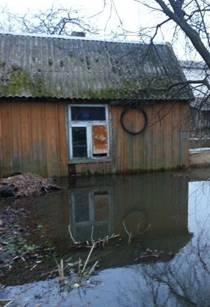
A state of emergency has been declared in Lithuania's western municipality of Pagėgiai on Monday due to ice jams and rising water.
The army will be asked to provide an amphibian vehicle to get access to households in flooded areas.
"It has been decided to declare a state of emergency," Vaidas Bendaravičius, director of administration at Pagėgiai Municipality, told BNS.
According to him, ice jams are not abating and freezing water is impeding access to households in flooded areas. All in all, 21 homesteads with 72 people are now cut off.
A state of emergency was earlier declared in the neighboring Šilutė Municipality.
An unexpected flood started in the final days of last year due to warmer weather and ice jams.
- Bookmark :
- Digg
- del.icio.us
- Stumbleupon
- Redit it
- Posted by - (0) Comment
Lithuania’s Hill of Crosses
without equal in the world
The Hill of Crosses (Lithuanian: Kryžių kalnas) is a site of pilgrimage about 12 km north of the city of Šiauliai, in northern Lithuania. The precise origin of the practice of leaving crosses on the hill is uncertain, but it is believed that the first crosses were placed on the former Jurgaičiai or Domantai hill fort after the 1831 Uprising. Over the centuries, not only crosses, but giant crucifixes, carvings of Lithuanian patriots, statues of the Virgin Mary and thousands of tiny effigies and rosaries have been brought here by Catholic pilgrims. The exact number of crosses is unknown, but estimates put it at about 100,000 in 2006.
- Bookmark :
- Digg
- del.icio.us
- Stumbleupon
- Redit it
- Posted by - (1) Comment
Lithuania’s Hill of Crosses
without equal in the world
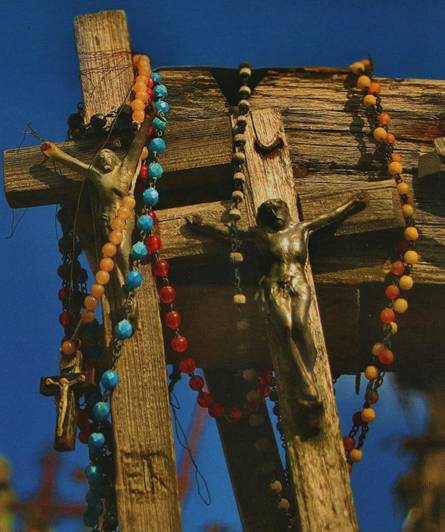
The Hill of Crosses (Lithuanian: Kryžių kalnas) is a site of pilgrimage about 12 km north of the city of Šiauliai, in northern Lithuania. The precise origin of the practice of leaving crosses on the hill is uncertain, but it is believed that the first crosses were placed on the former Jurgaičiai or Domantai hill fort after the 1831 Uprising. Over the centuries, not only crosses, but giant crucifixes, carvings of Lithuanian patriots, statues of the Virgin Mary and thousands of tiny effigies and rosaries have been brought here by Catholic pilgrims. The exact number of crosses is unknown, but estimates put it at about 100,000 in 2006.
|
Number of crosses
|
|
Over the centuries, the place has come to signify the peaceful endurance of Lithuanian Catholicism despite the threats it faced throughout history. After the 3rd partition of the Polish–Lithuanian Commonwealth in 1795, Lithuania became part of the Russian Empire. Poles and Lithuanians unsuccessfully rebelled against Russian authorities in 1831 and 1863. These two uprisings are connected with the beginnings of the hill: as families could not locate bodies of perished rebels, they started putting up symbolic crosses in place of a former hill fort.
When the old political structure of Eastern Europe fell apart in 1918, Lithuania once again declared its independence. Throughout this time, the Hill of Crosses was used as a place for Lithuanians to pray for peace, for their country, and for the loved ones they had lost during the Wars of Independence.
Most recently, the site took on a special significance during the years 1944–1990, when Lithuania was occupied by the Soviet Union. Continuing to travel to the Hill and leave their tributes, Lithuanians used it to demonstrate their allegiance to their original identity, religion and heritage. It was a venue of peaceful resistance, although the Soviets worked hard to remove new crosses, and bulldozed the site at least three times (including attempts in 1963 and 1973). There were even rumors that the authorities planned to build a dam on the nearby Kulvė River, a tributary to Mūša, so that the hill would end up under water.
On September 7, 1993, Pope John Paul II visited the Hill of Crosses, declaring it a place for hope, peace, love and sacrifice. In 2000 a Franciscan hermitage was opened nearby. The interior decoration draws links with La Verna, the mountain where St. Francis received his stigmata. The hill remains under nobody's jurisdiction; therefore people are free to build crosses as they see fit.


- Bookmark :
- Digg
- del.icio.us
- Stumbleupon
- Redit it
VilNews e-magazine is published in Vilnius, Lithuania. Editor-in-Chief: Mr. Aage Myhre. Inquires to the editors: editor@VilNews.com.
Code of Ethics: See Section 2 – about VilNews. VilNews is not responsible for content on external links/web pages.
HOW TO ADVERTISE IN VILNEWS.
All content is copyrighted © 2011. UAB ‘VilNews’.

 Click on the buttons to open and read each of VilNews' 18 sub-sections
Click on the buttons to open and read each of VilNews' 18 sub-sections 



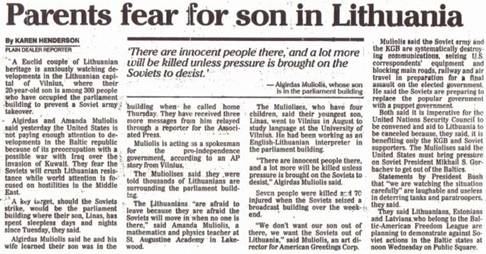




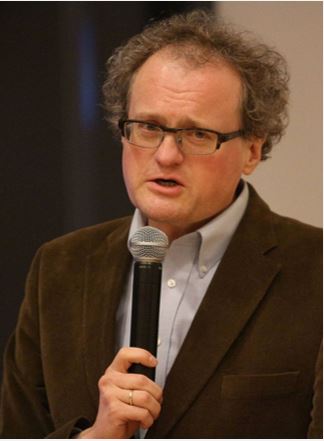
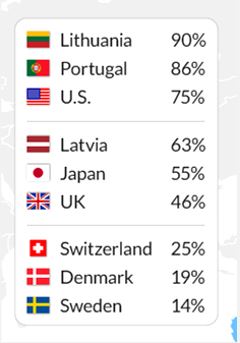
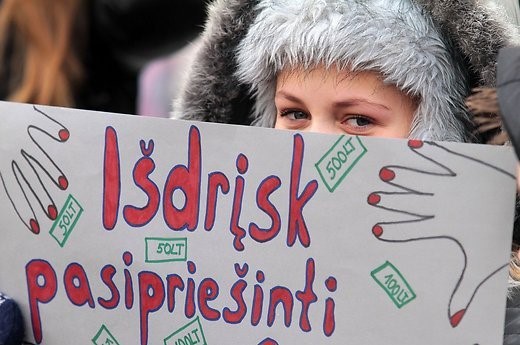


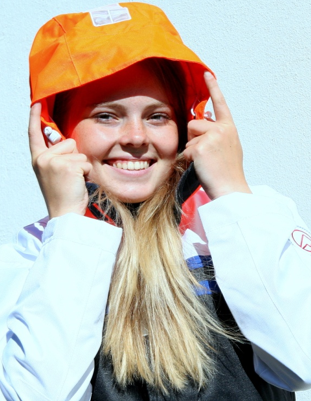
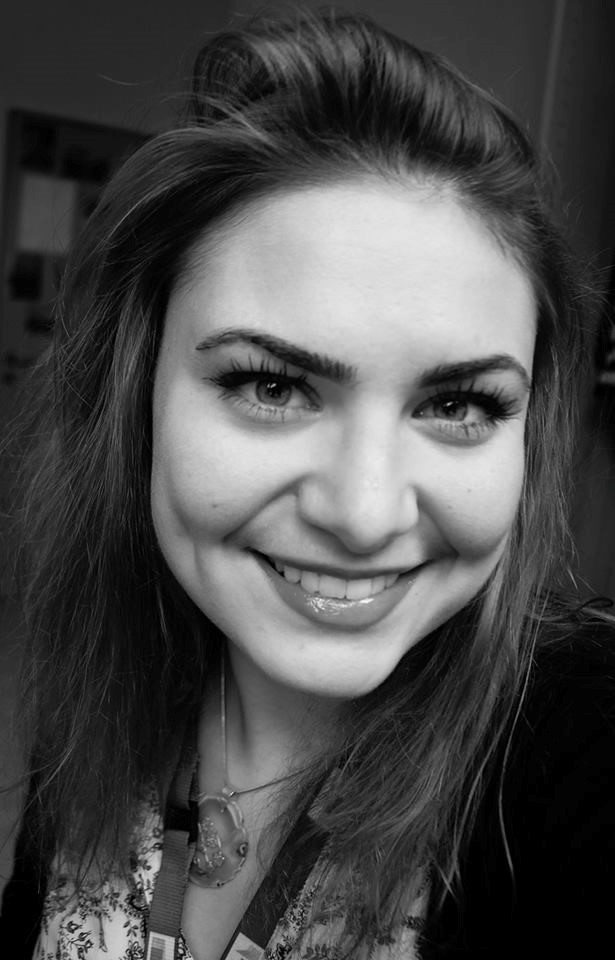
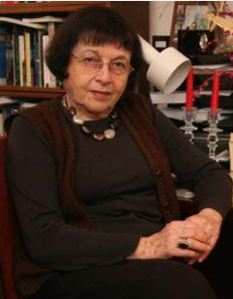
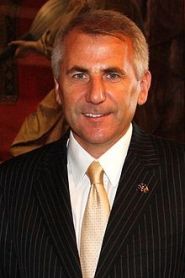
.jpg)
